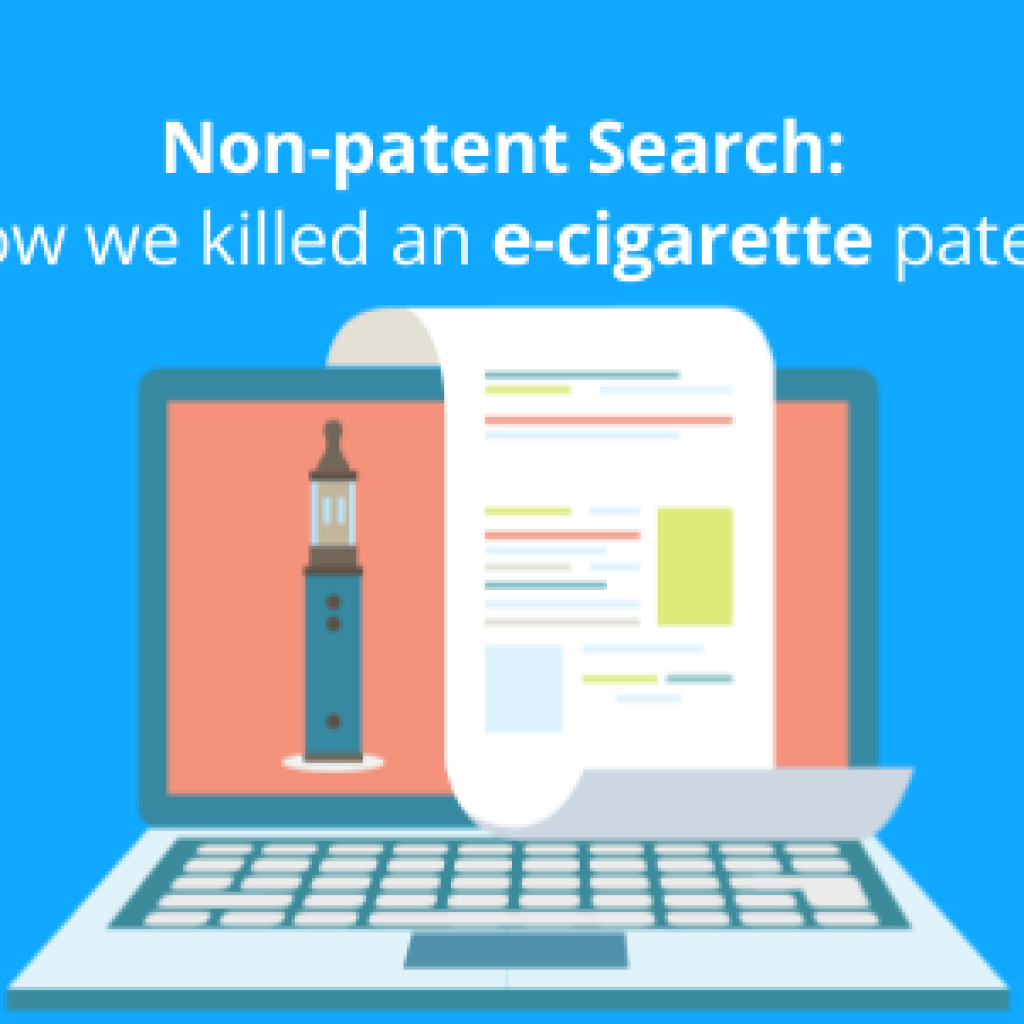For big companies with active R&D departments, keeping track of the many thousands of individual patents that often make up their patent portfolios frequently represents a daunting task, the burden of which tends to fall on patent review boards, or PRBs. At a moment’s notice, corporate higher-ups expect PRBs to be able to provide them with vital IP intelligence:
- How many patents do we have?
- How much are they costing us?
- What are they worth?
- How should we craft patent strategy going forward?
But without a streamlined method for organizing and analyzing the patents under their stewardship, PRBs find themselves in an uncomfortable position, scrambling for answers that they’re ill-equipped to provide.
In this article, we’ll detail how we helped one PRB director address these and other challenges arising from the management of a large patent portfolio. To do it, we created an in-house software system for organizing and analyzing his patents in a way that precisely reflected his—and his company’s—overall strategy for patent portfolio development. The approach represented a marked improvement over the efforts of three other vendors, which had previously been hired to help organize the portfolio, and which had neglected to tailor their approach to his company’s specific portfolio development strategy. The new system has proven so effective that the company’s other PRB directors have since tapped us to help them organize and analyze their patent portfolios.
Searching for a Solution That Didn’t Exist
Some years ago, we were approached by an R&D executive from a large telecom firm who had been made director of one of his company’s several patent review boards (PRBs). The exec’s PRB was dedicated to wireless technology. In his role as director, he was responsible for effectively encouraging productivity in wireless R&D labs, deciding what patents to pursue, interfacing with IP counsel to see those patents to fruition, and handling various aspects of patent monetization, among other things.
But like many in similar positions, he was overwhelmed by the volume of the patents he was responsible for overseeing, and almost equally distressed by the way they were organized. Under the exec’s department alone, the company held some 15,000 patents. They had been developed over a long period of time, many of them before patent analytics became a subject of great interest, even at big tech companies.
In order to lead his team effectively, he needed a single, comprehensive method for keeping track of all the patents in his portfolio—a way to continuously analyze their value as a function of both internal corporate strategy and a shifting technological landscape.
Unfortunately, such a thing simply did not seem to exist.
How the PRB’s Patent Organization System Left It Unable to Do Its Job
Over the years, his team had introduced various tools and systems to accomplish discrete management tasks—tracking patents in development, patents filed, patents prosecuted, etc.—dispersing data across multiple platforms and programs, notably Excel and Salesforce. At some point, these methods might have been adequate. However, as intellectual property occupied an ever more prominent position in the telecom companies’—as well as many others’—overall corporate strategy, the executives in charge of developing and managing patents needed to understand their IP in an increasingly dynamic, holistic way.
Maintenance fees for a large patent portfolio can easily cost millions of dollars a year, a fact that puts tremendous pressure on PRBs to demonstrate the value of the patents they’re responsible for. Consequently, PRBs are expected to give regular presentations to C-Suite higher-ups about the state of the patent portfolio they manage.
That included the PRB headed by our wireless R&D exec. He needed to be able to answer the following questions:
- How many patents did they have?
- How good were they?
- In what specific sub-areas of technology was the company relatively strong or weak?
- What is all of this costing us and what are we getting in return for our investment?
- What makes sense for the company going forward based on what’s going on now?
At the telecom company, the wireless PRB was having a lot of trouble coming up with good answers to these last two—and most important—questions. Frustratingly, part of the problem was clerical: merely corralling the data from its multiple storage locations and organizing it into the graphs and charts required for the PRB’s presentations was eating up a tremendous amount of the board members’ time and energy. Once they did have their data organized, they had no way of efficiently and reliably analyzing it in order to answer substantive questions and craft strategy.
At the same time, many of the employees in the wireless R&D department were strenuously resistant to changing their way of doing things. Lacking any solid, centralized method of data storage, they were relying on a handful of jerry-rigged solutions, all of which required painstaking maintenance in order to ensure that no vital scrap of information was lost in the chaos. Inconvenient as this was, they’d become used to the arrangement. Its very precariousness made them fearful that in an effort to improve, they might upset a delicate balance—destroying the data they had or rendering it indecipherable to themselves in the future.
The situation to some extent resembled a conundrum often faced by hoarders: Terrified that they might somehow lose something in the process, they simply decided that it was better to never clean up at all. The result was that the PRB was almost completely unable to do its job.
There was also the fact that when in the past they’d hired people to help them, they’d been deeply dissatisfied with the results.
Why One-Size-Fits-All Solutions Didn’t Make the Cut
By the time he came to us with his problem, the wireless PRB director had already worked on it with three other IP research vendors. Each vendor had organized and analyzed the telecom company’s wireless patent portfolio in a different way, based on their own standards, metrics, and sensibilities. None of them had provided results that the PRB director felt he could rely on. It wasn’t that any of the vendors had done anything wrong, per se. Each of them had applied their knowledge and know-how to achieve what they believed to be an accurate, well-organized analysis. The trouble was that their approach had been to provide a kind of commoditized product rather than enter into a partnership. As a result, their work reflected their understanding of the patent portfolio alone. In other words, they’d never asked the client what mattered to him.
As we’ve written previously, at GreyB, we, too, have an intricate, finely-honed in-house approach to patent portfolio analysis, which we apply to a variety of tasks on behalf of our clients: patent monetization, crafting IP and R&D strategy, landscape analysis, and more. (You can read about it in detail here.) To be sure, we drew on that expertise to approach our PRB director’s project. We also looked at the previous vendors’ reports, noting overlaps amongst them and extracting any useful insights we identified. But our PRB director needed more than a single, or even a recurring patent portfolio analysis. He needed a software system for continuously organizing and evaluating the thousands of patents in his portfolio—one that would think like him. We set out to deliver one.
How We Developed a Tailor-Made Solution
As it turned out, the director had very definite ideas about what he wanted. He knew what his telecom company’s priorities were where IP was concerned and how his wireless R&D team could theoretically help them move toward their goals. (He even knew what he wanted the interface for his software system to look like, providing us with a pencil drawing.) But like any PRB member at a big company, he had no time to apply the analytical framework he had in mind to the patents in his portfolio. (Nor did he have the necessary software development chops.)
The telecom company’s central aim was patent portfolio development. Specifically, they wanted to understand the landscape of their existing patents and how they could influence the portfolio’s development through strategic investment:
- In what tech domains were they strong, with a healthy stockpile of good patents? These were areas where they would likely want to devote fewer resources.
- Where were they weak—having either very few patents or a high volume of low-quality patents?
- Where did they need to allocate more manpower—and funding?
- How could they do so in a way that would correspond profitably to technological and marketplace trends?
- Where were they spending money developing and maintaining patents that did not fit into their core business? These would be opportunities to cut costs by systematically culling patents from their portfolio—and grow revenue by selling patents to companies that might have a more immediate use for them.
- What patents were likely to be infringed upon by other companies and could, therefore, be leveraged to extract lucrative licensing fees?
Being able to instantaneously answer these questions would drastically increase the PRB director’s value to his company. But his firm’s international reach came with its own set of additional demands.
How Geography Complicated the Picture
The telecom company also had a strategy of limiting patent filings to the geographical jurisdictions where they were currently operating. But they were still paying handsome fees to maintain patents in areas of the world where they were no longer active. In some cases, their decision to pull out of one region or another had to do with local competition. In others, they’d developed local partnerships. Whatever the case, maintaining their patents in these regions was redundant, draining away precious resources. This element of the company’s strategy meant that our system had to analyze the patent portfolio as a function of geography, allowing the PRB to quickly identify additional patents ripe for culling or sale.
Creating the Solution That Didn’t Exist
The first thing to do, of course, was to collect all of the wireless PRB’s patent data in one place, creating a standardized format to be cleanly and efficiently organized, analyzed, and cross-referenced. We linked this new, comprehensive database containing all of the PRB’s raw patent data to a software interface we designed according to our PRB director’s specifications.
Many big companies have internal patent organization systems that are perfectly adequate for arranging information in an orderly way. But this interface featured filters and visualization tools designed to reflect precisely the PRB director’s—and his telecom company’s—way of looking at IP strategy and priorities. The distinction represented something like the difference between a vault and a brain; rather than simply storing patent data, the new system would evaluate it continuously according to a sui-generis analytical model.
The wireless PRB would now be able to view its portfolio from a variety of angles, each of which could provide vital strategic insights:
- They could look at patent subsets based on geography, tech sub-specialty, or research, allowing them to understand in an instant which patents they needed to maintain or cull due to geography or relevance to their core of the business and who on their teams were contributing most or least to R&D.
- They could see what patents had been filed, which had been granted, licensed, and were approaching their expiration date: a complete, nuanced picture of the wireless patent portfolio’s health that showed its areas of strength and weakness, arming the PRB with actionable strategic intelligence.
- They could easily view the prolific inventors in each department and encourage them to file more patents.
What the New System Promises for the Future
While it had previously been all the PRB could manage to crunch numbers and update charts in time for their presentations to the company’s board, now they were free actually to use the data at their disposal. For one, they could show off their R&D department’s value to the firm, demonstrating where their patents were paying off in the form of licensing fees, sales, or use in products. They could also identify new opportunities for licensing fees or sales in patents that were very difficult to find until recently, buried somewhere in an Excel spreadsheet with thousands of other patents. The PRB could also show the higher-ups where the firm could be saving money by discontinuing maintenance on patents that had become irrelevant or redundant. More intangibly, the PRB could now provide detailed, up-to-the-minute analysis of how best to proceed: where to invest or retreat, when to buy rather than a file, whom to promote or fire, and more.
Within a couple of years, seeing the wireless PRB’s wins, some of the telecom company’s other PRBs, which had similar problems and which were also resistant to change, began to come around. We’ve since standardized and centralized all of the company’s patent data—a significant task, given that each PRB had its own haphazard organization system and idiosyncratic nomenclature tied to one tech specialty or another and that we were dealing with tens of thousands of patents accrued over decades.
As we work to create software interfaces tailored to the needs of each PRB, what’s emerging is a kind of the story of the company’s patent portfolio as a whole, with all of its key elements highlighted by the filters and functionalities we’re working with the PRB directors to create. The company’s board can now see results much like those that came out of our work with the wireless PRB writ large.
From 10,000 feet, they can direct IP strategy vastly more efficiently and effectively while identifying packages of patents that are best suited for licensure or sale. With the tools now at their disposal, they have easily and quickly identified numerous patent clusters with multi-million dollar potential. As the new interfaces come online, the company will be able to see its own patent portfolio, which was once so hazy, with increasing—and increasingly lucrative—clarity.
Want to learn more about how GreyB can assist in organizing and analyzing your company’s patent portfolio?













